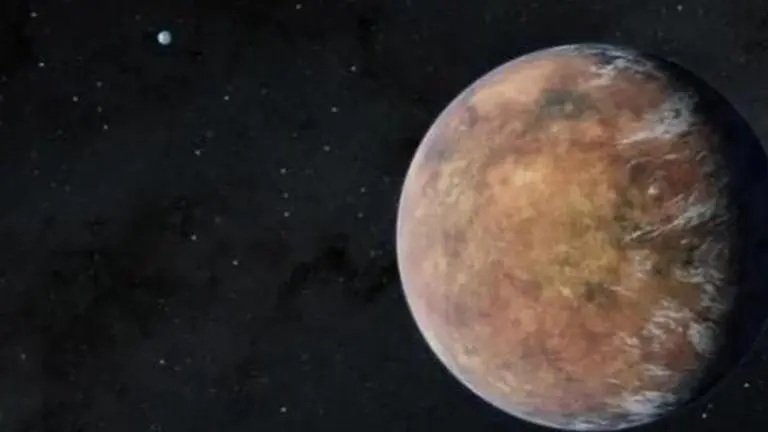Updated 12 January 2023 at 16:59 IST
NASA's James Webb Space finds its first planet outside Solar System, research underway
NASA's James Webb Space Telescope amazed people by displaying photos of celestial bodies which is usually never seen by humans.
- Science News
- 2 min read

NASA's James Webb Space Telescope amazed people by displaying photos of celestial bodies which are usually never seen by humans. It has been considered to be the successor of the renowned Hubble telescope as it is the most influential space telescope ever made.
The powerful telescope has covered almost everything, from Neptune's rings, photos of other galaxies, a Cosmic Tarantula, and also the universe's deepest infrared image etc. The exoplanet, which is formally termed LHS 475 b, has almost the same size as the Earth.
Scientists still unsure about the composition of the exoplanet
However, scientists are still not confirmed about the atmosphere and composition of the planet, checks have assured that it is 99 per cent of Earth's atmosphere. The new-found planet is 41 light-years far and it is slightly warmer than Earth and completes an orbit in two days.
The planet does not have an atmosphere formed by thick methane, like the way it was found on Saturn's moon, Titan. It was selected for analysis by Webb after it was seen in NASA's Transiting Exoplanet Survey Satellite (TESS) observation data.
Advertisement
Taking to Twitter NASA Webb Telescope said, "A whole new world! 41 light-years away is the small, rocky planet LHS 475 b. At 99% of Earth’s diameter, it’s almost exactly the same size as our home world. This marks the first time researchers have used Webb to confirm an exoplanet."
A whole new world!
— NASA Webb Telescope (@NASAWebb) January 11, 2023
41 light-years away is the small, rocky planet LHS 475 b. At 99% of Earth’s diameter, it’s almost exactly the same size as our home world. This marks the first time researchers have used Webb to confirm an exoplanet. https://t.co/hX8UGXplq2 #AAS241 pic.twitter.com/SDhuZRfcko
Mark Clampin, Astrophysics Division director at NASA Headquarters, stated that a new planet has opened options for researchers.
Advertisement
"These first observational results from an Earth-size, rocky planet open the door to many future possibilities for studying rocky planet atmospheres with Webb. It is bringing us closer and closer to a new understanding of Earth-like worlds outside our solar system, and the mission is only just getting started," he said.
He added, "Webb is bringing us closer and closer to a new understanding of Earth-like worlds outside our solar system, and the mission is only just getting started."
The research team is supervised by Kevin Stevenson and Jacob Lustig-Yaeger, who belong to the Johns Hopkins University Applied Physics Laboratory.
“There is no question that the planet is there. Webb’s pristine data validate it. The fact that it is also a small, rocky planet is impressive for the observatory", Lustig-Yaeger said. Also, the analysing process is still underway to find out if there is an atmosphere on the exoplanet.
Published By : Abheet Sajwan
Published On: 12 January 2023 at 17:01 IST
